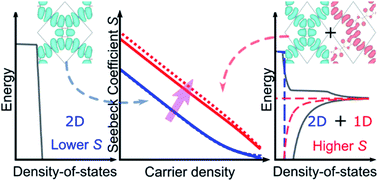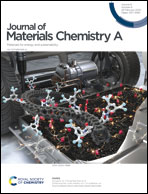Beyond the Mahan–Sofo best thermoelectric strategy: high thermoelectric performance from directional π-conjugation in two-dimensional poly(tetrathienoanthracene)†
Abstract
Mahan and Sofo proved that the best thermoelectric performance could be found in materials with a sharp peak in the density-of-states (DOS) near the chemical potential, which may come from a localized electronic state. However, such a state usually results in a poor electrical conductivity. Therefore, such an idealized model leads to this question: is there a material which naturally possesses a narrow DOS peak near the band edge without a localized state? The answer is yes. From a number of covalent organic frameworks (COFs), we identified poly(tetrathienoanthracene) (PTTA), a purely organic 2D COF possessing such a DOS and subsequently achieves a significant thermoelectric performance with an enhanced Seebeck coefficient such that the peak n- and p-type power factors can reach up to 14.9 and 21.9 μW cm−1 K−2, respectively. This provided a feasible prototype of the Mahan–Sofo model and demonstrated for the first time that a purely organic 2D COF could exhibit high thermoelectric performance for functional applications.



 Please wait while we load your content...
Please wait while we load your content...